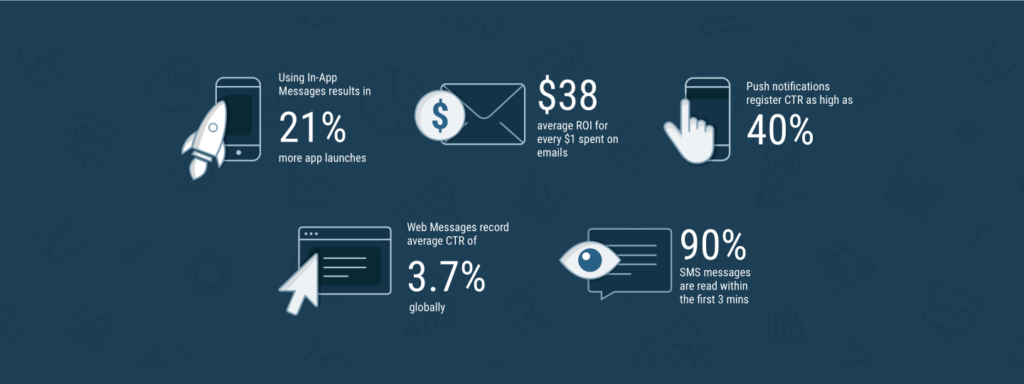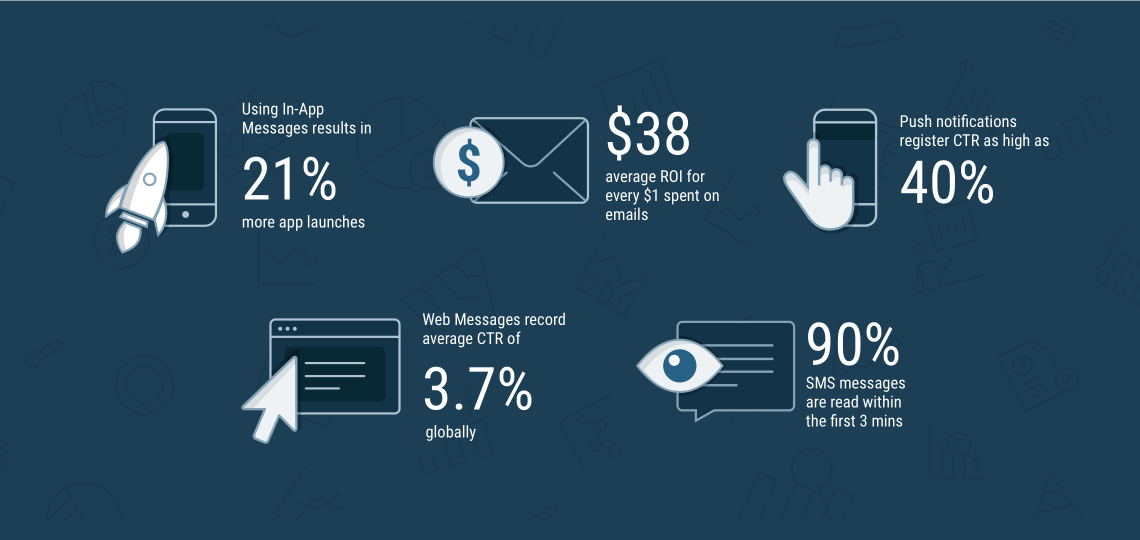
Finding it difficult to choose the right channel for transactional and marketing messages? So you’ve come to the correct site, then. In the sections below, we’ll look at several message formats and discuss how to pick the best channel for your use case.
Transactional Messages: What Are They?
Automated communications known as transactional messages are those that are usually brought on by a specific user or client activity. These signals are particular to each person and include crucial details about the conduct in question. A excellent user experience depends on transactional messages, which are sent only when necessary. For instance, if a consumer purchases something from your online store, they anticipate receiving a receipt and a confirmation of their order’s tracking via the channel of their choice. Without transactional messages, your user can overlook important information and have a disjointed experience. Order confirmations, delivery status updates, shipping updates, account balance alerts, and links for password change are a few examples of transactional messages.
Marketing Messages: What Are They?
Marketing messages are provided to users to persuade them to do a particular activity. Marketing communications are intended to please and entice your audience, in contrast to transactional notifications, which are more logistical in nature. In order to make the content more pertinent to the recipient, they are often distributed to segmented user groups. Marketing messages can present pertinent content to encourage visitors to return to your website or app, or they can advertise specific discounts or specials.
Email
There are 3.9 billion daily email users worldwide as of 2020, and that figure is projected to increase to 4.3 billion by 2023. If a user has already provided their email address, email does not require opt-in, but you must provide all users with the opportunity to unsubscribe. Email has several significant advantages and particular constraints as a result of its widespread use and long history as a marketing channel.
Inboxes are frequently the first places users look for information since they are used to getting brand messages there. Additionally, it’s usual practise to register for a service or open an account using your email address, so user expectations include receiving account-related communications like password reset requests, account confirmations, and security alerts. Email offers more space for content sharing and has more customization options than SMS and push notifications, which have word limits. Newsletters are a good example of longer material that is ideally suited for email and can offer a range of engagement possibilities.
On the other hand, due to its long history as a marketing tool, email is a crowded and aggressive market. Writing concise, witty, and value-driven language is crucial for promotional emails because, unlike SMS and push, many of them are not opened. The primary content of your email won’t ever be seen by your intended audience if the subject line and preview text fail to catch their attention. The content and appearance of emails should be relevant to each channel in addition to having catchy copy. Emails can be accessed via desktop or mobile devices.
App-Based Messaging (IAM)
As the name suggests, in-app messages are notifications that consumers see while utilising your app. Although the audience for in-app communications is smaller (active users), it is incredibly attentive and receptive to communication. With an 18–20 times higher click-through rate than web and mobile push notifications, in-app communications (interstitials, banners, pop-ups, etc.) can be a terrific addition to your marketing plan.
Even though you might not think about in-app alerts when you consider transactional notifications, they can be an important component of your user experience. As an illustration, if a user attempted to login into their bank account on a new laptop, they might get a mobile push notice with a verification number and an in-app message inquiring if they had attempted to connect into their account on another device. In this approach, push notifications and in-app messaging can work together to offer a more smooth and trustworthy experience.
